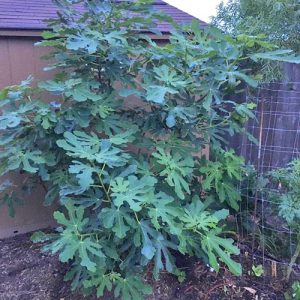If you live with cold winters and cool summers, then White Spruce is the ideal choice for a large specimen tree or privacy tree. Planted around your property, this tree will quickly grow into a dense, attractive screen that will stand arctic blasts and shelter your home and garden from the worst of the winter. It is also such a beautiful tree it makes a perfect lawn specimen too.
- Tough to minus 50, withstands the coldest conditions
- Perfect conical form without clipping
- Idea privacy tree and windbreak for cold regions
- Brings forest beauty right into your garden
- Easy to grow, self-reliant and pest-free
White Spruce will grow happily in any ordinary garden conditions and thrives in damper areas where other evergreens will suffer. This tree is hardy in the coldest winters and keeps it branches low to the ground for many years, making an ideal snow barrier and windbreak. This is the perfect plant for trouble-free gardening.
Choosing trees for your property doesn’t have to be hard. If you have the space to grow one or more of these exceptional trees, then you will also reap the benefits of having them included in your landscape design. Not only do they provide visual diversity; they also provide a cool place to relax during a hot summer afternoon, or break the wind on snowy winter days – and better yet, spruce trees in particular are excellent attractors for the local wildlife. Birds and small animals will flock to the tree’s lofty branches for playtime, and even to create permanent homes for many years to come. Even though there are literally thousands of trees to choose from, there are none quite like the picea glauca white spruce.
The white spruce is found in far northern locations throughout the world. They grow naturally in North America from central Alaska across southern Canada, the northern reaches of most of the Midwestern states and into the New England area. They are also found in several unique locations; the Avalon Peninsula in Newfoundland and in secluded locations in South Dakota and Wyoming.
Growing White Spruce Trees
Towering above many other trees, the white spruce can reach heights of up to 60 feet. With that in mind you might be surprised to learn that this specific species is also a prime choice for creating bonsai trees; miniature versions of its much larger counterparts. In the wild, the tree can easily reach 130 feet in prime growing conditions. Even though this species can grow to be around 20 feet in diameter, it is quite slender compared to other spruces. Its conical shape allows it to maintain a uniform appearance no matter what height it reaches. As the tree matures, its defined conical shape becomes slightly more cylindrical to help accommodate its extreme height.
The trunks on the white spruce can also reach up to three and a half feet in diameter and is covered in a thin scaly bark that flakes off as it ages. Short, silver, bluish-green needles and branches grow in abundance on this tree, closely clumped together with long, slender pinecones growing in large quantities on each branch. As the tree matures these branches take on a slightly droopy appearance, in part due to the weight of the foliage and cones, but also because the lower branches are quite long. The white spruce undergoes little change throughout the season, ensuring you’re treated to a lovely color splash all year long.
Hardiness
As mentioned, the white spruce is found mostly in the northern hemisphere; locations that fall within USDA plant hardiness zones 2 to 6. It can tolerate the extreme cold found in central Alaska, but it will be less happy with the heat and humidity found in the lower states like Missouri and Tennessee.
Soil Conditions
White spruces are also very adaptable to many soil types. Because the terrain varies so much between the various areas that the spruce is indigenous to, it really isn’t a surprise that the tree can adapt accordingly. In ideal situations the white spruce does best in sandy, loamy, or heavy clay soils, regardless of the nutritional values present. Even though it can also grow in heavily acidic soils, it will thrive best in neutral pH ground that is moist or slightly wetter.
Sun and Wind Exposure
It is very important to note that this giant of a tree cannot grow in the shade and must be subject to as much sun as possible. It’s sheer size make it great for withstanding very strong winds, but it does not like the strong winds coming off of the sea. The high salt and moisture content of sea breezes can damage and even kill the white spruce. However, it does like areas close to standing water like lakes and ponds.
Care and Maintenance
When left to its own devices, the white spruce can be an easy tree to grow. Very little maintenance is required unless you absolutely feel it is necessary. The tree can benefit from having dead or dying branches removed and you could remove the current season’s new growth if you are keen on keeping the tree as evenly formed as possible. You won’t have to use decorative mulch unless you want to either. The falling needles of the white spruce will create a rich bed beneath the tree to help keep the soil rich and moist throughout its lifespan.
One thing you will have to keep an eye out for is spruce beetle infestations. Spruce beetles are responsible for killing over 2.3 million spruce trees in Alaska but with quick intervention you can prevent such a catastrophe from happening. Sawflies and insects called “loopers” are both something you will want to watch out for. Catching these destructive bugs early on can save your tree, or at least avoid the cost of having to hire a professional for extensive infestations.









